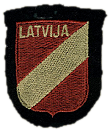A10 305 336
do not discount the Service's witnesses testimony, merely because as Latvian Jews, victims of the holocaust, their testimony could also be mistaken. Anyone claiming personal knowledge of the events regarding this case could be subject to charges of bias.
One of the problems with the Service's witnesses is the lack of specificity of their description of the man they called "Hazners". There are contradictions as to the clothing worn by the man. Some witnesses have him wearing civilian clothes, others have him wearing Latvian uniform clothes, while one of the witnesses has "Hazners" wearing the black S.S. uniform. Other discrepancies deal with whether the man wore glasses. These discrepancies are not necessarily fatal to the identification, in view of the many years since the events transpired. However, they do detract somewhat from the certainty of the identification and contrast with the certainty with which the witnesses now identify the respondent.1 It is clear that before looking at the photographs all the witnesses believed that all the photographs shown were photographs of war criminals. More significant is the fact that none of the witnesses described the man they call "Hazners" as someone who had had his head shaved. The respondent introduced substantial evidence that his head had been shaved and that this attracted everyone's attention who saw him. In addition, none of the witnesses knew the respondent's first name, or had an opportunity to learn the respondent's name prior to the events of July 1941. One of the witnesses admitted that the respondent's photograph had the name "Hazners" written underneath it.
Another significant question raised by the Service's witnesses is their origin. No documentary evidence was presented regarding their nationality and residence in Latvia during the alleged events. All of the witnesses originated from Israel and were selected and prepared by the same Israeli Investigator. 5/ This contrasts with the respondent's own witnesses who ranged from all over the world. Some of the witnesses who testified about seeing the respondent at the Riga police station testified that they never saw the respondent again, even though they were at the Riga ghetto. This detracts from the testimony of those who testified about the respondent's alleged activities in the Riga ghetto.
| 5/ | In a related denaturalization trial, a federal district court judge concluded that Inspector Radiwker may have coached the witnesses prior to their testimony. See United States v. Fedorenko, 455 F. Supp. 893, 907 (S.D.Fla. 1978), rev'd on other grounds, 597 F.2d 946 (5 Cir. 1979), 49 U.S.L.W. 4120 (1981). |
24
| 1 | Research has established that repeated viewings by witnesses of photographs, as was done in Hāzners's case, influences witnesses' degree of certainty, that is, the more they see the same photographs, the more they believe they are of the person they saw and accused. |
